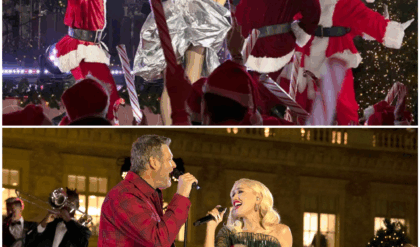In a seismic shift for the DC Universe, Warner Bros. has locked in two of its most anticipated superhero spectacles for grand IMAX premieres in 2027, promising audiences an unparalleled cinematic feast. James Gunn’s Superman: Man of Tomorrow, the bold follow-up to his 2025 reboot, blasts into theaters on July 9, while Matt Reeves’ brooding The Batman Part II lurks in the shadows until October 1. This dual assault not only cements DC’s commitment to premium large-format experiences but also spotlights the divergent visions steering the franchise: Gunn’s vibrant, hope-infused saga of the Man of Steel versus Reeves’ gritty, noir-drenched Gotham odyssey. With IMAX’s crystal-clear visuals and thunderous sound design amplifying every heat-vision blast and Batmobile roar, these films aren’t just sequels—they’re declarations of intent. As the DCU evolves amid multiversal mergers and Elseworlds expansions, 2027 emerges as a pivotal year, where Superman’s optimism collides with Batman’s vigilantism on the biggest screens imaginable. Fans, brace yourselves: the caped crusaders are coming, and they’re bringing the future with them.
The Dawn of Man of Tomorrow: Gunn’s Superman Sequel Takes Flight
James Gunn’s Superman (2025) wasn’t just a reboot; it was a resurrection. Grossing over $616 million worldwide and earning a 78% on Rotten Tomatoes, the film introduced David Corenswet’s earnest Clark Kent as a beacon of kindness in a cynical world, blending heartfelt drama with Gunn’s trademark humor and ensemble flair. Critics hailed its “vibrant visuals and strong performances,” particularly Corenswet’s portrayal of a 25-year-old hero reconciling his Kryptonian roots with Smallville upbringing. Now, mere months after its July premiere, Gunn has fast-tracked the sequel, Superman: Man of Tomorrow, to capitalize on that momentum.
Announced via Gunn’s Instagram on September 3, 2025, with concept art from DC Chief Creative Officer Jim Lee depicting a smirking Superman tinkering with Lex Luthor’s hulking mech suit, the film promises a narrative pivot. “It’s as much a Lex movie as it is a Superman movie,” Gunn revealed on The Howard Stern Show, teasing an uneasy alliance against a “much, much bigger threat.” Production kicks off in April 2026, a blistering two-year turnaround that underscores Gunn’s efficiency—born from his Guardians of the Galaxy playbook—while positioning the sequel ahead of Reeves’ Batman epic.
The title evokes Superman’s comic legacy, from radio serials to Alan Moore’s poignant Whatever Happened to the Man of Tomorrow?, symbolizing hope’s endurance. Gunn’s vision for the “Superman Saga”—a four-film arc—expands the DCU’s “Chapter One: Gods and Monsters,” weaving in threads from the first film’s post-credits tease of Brainiac’s shadow. With a $200 million budget mirroring its predecessor, Man of Tomorrow will shoot in Cleveland (doubling as Metropolis) and Norway’s icy fjords for Fortress of Solitude sequences, employing IMAX-certified cameras to capture epic aerial dogfights and Luthor’s armored rampages. As DC Studios co-CEO, Gunn’s dual role as writer-director ensures thematic continuity: kindness as superpower, even when forging pacts with arch-nemeses. For a franchise reeling from past misfires, this sequel isn’t escalation—it’s elevation, proving Superman’s tomorrow is brighter than ever.
Gotham’s Reckoning: Reeves’ Batman Sequel Emerges from the Shadows
While Gunn’s Superman soars toward the sun, Matt Reeves’ The Batman (2022) plunged audiences into Gotham’s rain-slicked abyss, grossing $772 million and snagging three Oscar nods for its operatic take on Year Two vigilantism. Robert Pattinson’s brooding Bruce Wayne—haunted, operatic, and operatically coiffed—redefined the Dark Knight as a detective first, avenger second, drawing from The Long Halloween and Year One. The film’s IMAX debut shattered records, with sequences like the Batmobile chase rumbling through theaters like a seismic event.
The Batman Part II, greenlit in April 2022, has navigated a tortuous path: initial 2025 target delayed to 2026 amid strikes, then to October 1, 2027, for script perfection. Reeves, co-writing with Mattson Tomlin (Project Power), shared a tantalizing Instagram glimpse of the finished draft in June 2025—a blurred Batman logo signaling progress. “We’re finishing the script,” Reeves confirmed, emphasizing his “slow but wonderful” process to probe “Is Batman even a good person?” Filming ramps up in spring 2026 across London’s Pinewood Studios and Chicago’s urban sprawl, with a VFX-heavy $250 million budget funding practical stunts and digital nightmares.
Plot whispers suggest a deeper dive into the Riddler’s flood-ravaged aftermath, with Harvey Dent’s Two-Face rumors debunked by Gunn—though a district attorney tease lingers. Expect explorations of Bruce’s psyche, perhaps via Arkham Asylum cameos, as Pattinson quips he’s “old Batman” at 38. The “Batman Epic Crime Saga” expands via HBO’s The Penguin (2024), where Colin Farrell’s waddling kingpin rises, setting up a seismic clash. Reeves’ noir aesthetic—Hitchcockian shadows, New Hollywood grit—will amplify in IMAX, transforming Gotham’s gothic spires into immersive cathedrals of crime. Delayed but undeterred, Part II isn’t rushing shadows; it’s cultivating them, ensuring Batman’s 2027 return is a thunderclap of moral ambiguity.
Stellar Casts: Heroes, Villains, and the Faces Defining DC’s 2027
Man of Tomorrow‘s ensemble reprises Gunn’s 2025 all-stars, blending fresh faces with DCU teases. David Corenswet returns as the optimistic Superman, his boyish charm evolving into resolute heroism against cosmic odds. Nicholas Hoult’s Lex Luthor—bald, brilliant, and brooding—anchors the villain’s arc, donning Jim Lee’s purple mech suit for a symbiotic showdown that humanizes the megalomaniac. Rachel Brosnahan’s Lois Lane, the tenacious Marvelous Mrs. Maisel alum, sharpens her investigative edge, while Skyler Gisondo’s Jimmy Olsen provides comic relief as the plucky photographer.
Gunn’s flair shines in supporting turns: Edi Gathegi’s Mister Terrific innovates gadgets, Anthony Carrigan’s Metamorpho shape-shifts chaos, Nathan Fillion’s Guy Gardner banters as a hot-headed Green Lantern, and Isabela Merced’s Hawkgirl soars with ancient fury. Krypto the Superdog, voiced by Gunn’s own pooch-inspired whimsy, steals hearts in loyalty-fueled feats. Newcomers like Wendell Pierce as Perry White bark orders, and Sean Gunn as Maxwell Lord scheme from boardrooms, fleshing out a Metropolis alive with moral gray.
Across town, The Batman Part II reunites Reeves’ core quartet: Pattinson’s emaciated Bruce, a powder keg of privilege and pain; Zoë Kravitz’s enigmatic Selina Kyle, clawing for autonomy; Jeffrey Wright’s steadfast Jim Gordon, Gotham’s fraying moral anchor; and Andy Serkis’ Alfred, the butler with a brawler’s soul. Farrell’s Oscar-buzzed Penguin waddles back, transformed from thug to tycoon post-The Penguin Season 1, his empire a powder keg for Batman’s ire. Barry Keoghan’s Joker lurks in teases, a spectral threat from Arkham’s cells. Rumors swirl of Tobias Menzies as Amadeus Arkham, adding psychological depth, while unconfirmed whispers hint at John Turturro’s Carmine Falcone remnants fueling corruption arcs. Reeves’ casting favors character actors over stars—Peter Sarsgaard’s Gil Colson echoes in bureaucratic veins—ensuring Gotham’s underbelly pulses with authenticity. These ensembles aren’t filler; they’re the DCU’s beating hearts, humanizing gods and vigilantes alike.
Crafting Epics: Production Insights into 2027’s Big-Screen Battles
Gunn’s Man of Tomorrow production echoes his 2025 efficiency: Cleveland’s steel mills morph into Metropolis towers, while Svalbard’s glaciers stand in for arctic fortresses, all captured on IMAX Red cameras for crystalline spectacle. Cinematographer Henry Braham returns from Guardians, wielding handheld chaos for Luthor’s labs and sweeping vistas for Superman’s flights. VFX houses like Weta Digital craft the mech suit’s hydraulic menace, blending practical armor with digital fury, while Volker Bertelmann’s score—swelling strings over hopeful horns—mirrors the alliance’s tension.
Reeves’ Gotham grind favors tactility: London’s fog-shrouded sets evoke Se7en‘s grit, with Chicago’s Loop for high-rise pursuits. Greig Fraser’s moody lensing—neon-drenched nights, rain-lashed alleys—will explode in IMAX, while practical Bat-vehicles (echoing Nolan’s Tumbler) thunder through VFX-enhanced floods. Post-production, spanning 2026-27, leans on ILM for hallucinatory sequences, with Michael Giacchino’s brooding motifs evolving into orchestral dread.
Both films navigate DC’s dual tracks: Gunn’s interconnected DCU versus Reeves’ standalone Elseworlds, yet IMAX bridges them, promising shared spectacle amid narrative divergence. Challenges abound—strikes’ echoes, budget scrutiny—but co-CEOs Gunn and Peter Safran affirm quality over haste, turning 2027 into a testament to patient craftsmanship.
IMAX Immersion: Elevating DC’s 2027 Visions to Monumental Scale
IMAX isn’t a format; it’s a force multiplier for DC’s 2027 titans. Superman‘s 2025 bow pioneered full-frame IMAX, with flight sequences spanning 1.90:1 canvases that made Metropolis feel infinite. Man of Tomorrow doubles down: Luthor’s mech clashes will engulf screens in 26% more image, heat vision scorching horizons in Dolby Atmos booms. Gunn’s colorful palette—vibrant Metropolis blues against arctic whites—pops in laser projection, immersing viewers in Krypton’s legacy.
Reeves’ The Batman redefined IMAX noir, its Bat-Signal piercing theater ceilings like a gothic laser. Part II‘s expanded footprint promises cavernous Gotham pursuits, rain-slicked chases vibrating seats with subwoofers. The format’s fidelity elevates Reeves’ soundscape—distant sirens swelling to visceral roars—while vertical compositions capture Batman’s towering isolation. With 2027’s slate (including Avengers: Secret Wars) crowding premium slots, IMAX’s 1,500+ global screens ensure DC’s duo dominates, blending spectacle with intimacy for an experience that’s less viewing, more visceral baptism.
Fan Fever and Box Office Horizons: Anticipation Builds for DC’s Doubleheader
Superman‘s 2025 triumph—$616 million on earnest escapism—ignites sequel hype, with #ManOfTomorrow trending post-announcement. Fans dissect Lee’s art for Brainiac hints, Mongul theories, or Superboy teases, while Corenswet’s wholesome Clark sparks “new Reeve” memes. The Batman‘s cult endures via The Penguin‘s Emmys buzz, fueling #Batman2027 petitions against delays. Social divides persist—Gunn’s “woke” backlash from MAGA corners met with his “kindness for all” retort—but unity prevails in cosplay cons and fan art floods.
Projections soar: Man of Tomorrow eyes $800 million domestically, buoyed by Gunn’s track record; Part II could eclipse $900 million, leveraging Pattinson’s indie cachet. Amid MCU fatigue, DC’s 2027 IMAX blitz—flanked by Supergirl (2026)—positions it as the summer-fall powerhouse, blending hope and dread into box office gold. Merch mania brews: Superman mech playsets, Batman Arkham figures. In forums, crossovers dream—Bruce meeting Clark?—but standalone strengths shine.
DC’s 2027 Odyssey: A Universe United by Vision and Vengeance
2027 isn’t a release year; it’s DC’s renaissance. Man of Tomorrow launches Gunn’s saga with alliance-forged optimism, seeding DCU threads like The Authority’s Engineer. The Batman Part II deepens Reeves’ crime epic, potentially trilogy-capping with The Court of Owls whispers. IMAX elevates both: Superman’s flights defying gravity, Batman’s shadows swallowing light. As delays forge diamonds, these films herald a DC reborn—diverse, deliberate, dazzling. Gunn’s tomorrow beckons with open arms; Reeves’ Gotham grips with iron fists. Together, they remind us: in heroes’ hearts, the greatest battles rage eternal.





